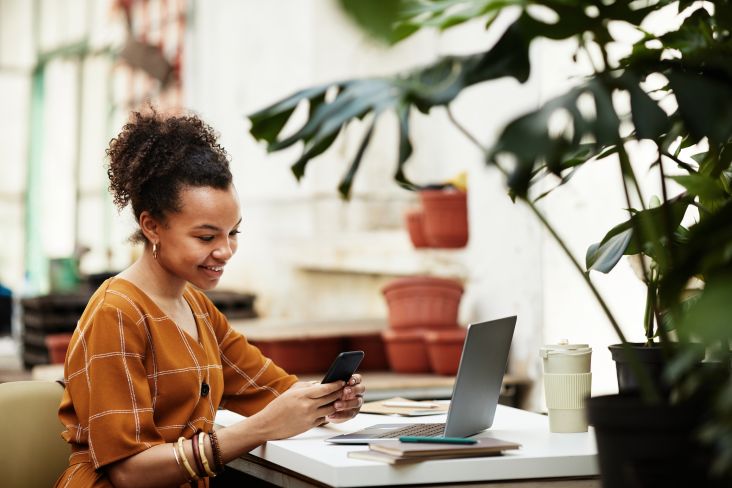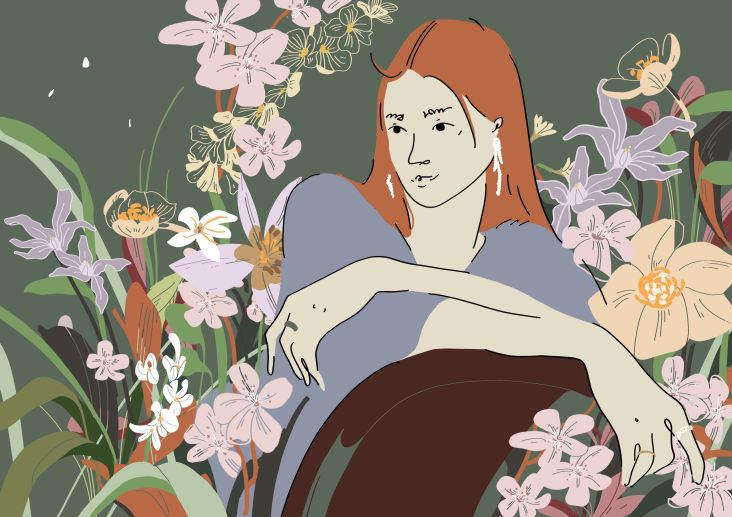How to beat isolation when you no longer live in a creative hub
Moving out of the city brings many advantages but can be a shock when you're no longer nestled in a metropolitan creative hub. Here are our tips on shifting your focus and developing a brand-new creative network out in the sticks.

Image licensed via Adobe Stock
Freelancing while living in the city can be an absolute dream. You've ditched the commute and work from home, but you still manage to stay connected with your fellow creatives, meeting up in bars and cafes, maybe popping into a local co-working space, and taking advantage of countless arts and cultural events around you.
But then you move to the country… and everything changes.
If this is you, you're not alone. In recent years, there's been a notable trend of creative professionals leaving bustling cities in favour of a quieter life out in the sticks.
And that's not surprising. The pandemic gave us a different perspective on life, changing our priorities while making Zoom the 'new normal' and massively boosting the number of remote working opportunities. More recently, the rising cost of rent has also prompted creatives to move out of expensive metropolitan areas. (For more on the reasons for the big exodus, read our article Why artists and designers are moving out of big cities.)
But while the countryside can be tranquil and beautiful, it does make it far more difficult to maintain a sense of creative community. And that can be a shock to the system once it kicks in. In this article, we'll explore strategies and tips on how to beat isolation when you no longer live in a creative hub.
1. Collaborate remotely
Living in a rural area doesn't have to limit your opportunities for creative collaboration. It just means you have to shift your focus to online. And that means being smarter about the tools you use and how you use them.
Zoom, after all, is great for formal meetings, but it has a lot of limitations. So it's helpful to expand the range of platforms you use and think more carefully about using different ones for different purposes. For example, if you're collaborating with someone on a project, then instant messaging via Slack can be much less arduous than having to put on your "best meeting voice" for a video call. And while it might seem odd to say, sometimes chatting via IM can feel more like being in the room with someone than seeing and hearing them on a video screen.
And that's just the start. From shared project management platforms to cloud-based file-sharing services, there are numerous ways that you can make remotely collaborating with fellow creatives more fun. For suggestions, see our roundup of tools to help freelancers achieve smooth-running projects.
2. Embrace online communities
The creative community isn't just about direct collaboration, of course. So you also need to think about how to replicate the in-person opportunities to randomly mix with fellow creatives offered in the city online. That might mean putting yourself out there more on platforms, social media groups and forums you already use, whether that's Behance, Twitch or Artstation. Or it may mean researching and discovering new ones, such as Creatives For Ukraine.
In short, there are hundreds of ways for creatives to connect online, so put the time and effort into finding the ones that are right for you. Finding the right online communities specific to your creative field or interests can help build a network of supportive peers, even if they are physically distant. Plus, it'll keep you engaged and creatively inspired as you adjust to your new life outside the city.
3. Make more effort for IRL
So you've moved out of the thriving, bustling creative hub that was your old city centre. But unless you're now living on a rock in the South Atlantic, there are still going to be opportunities to network in real life, even if they take a bit longer to get to. So again, you just have to put the work into finding out where and what they are. And maybe be a little less fussy about the kind of workshops, conferences, gallery openings, exhibitions and other creative events you show an interest in.
When you're out in the sticks, it also helps to reframe your personal perception of distance. For example, when you live in London, you'll think nothing of travelling to events across a city that's about 40 miles North to South and about 50 miles East to West, and often further than that, to places in Essex or Kent that feel like they're culturally part of London. But when you're in the countryside, you're less likely to think in those terms.
Okay, so public transport won't be as good as in a big city, but it might not be as bad as you imagine. And if you drive, you'll probably cover a large distance much more quickly than when you were in the metropolis. So it's worth casting your net for events wide to nearby towns or cities, planning occasional visits to creative hubs, or considering organising local gatherings with fellow creatives.
These experiences will help you stay connected to the larger creative community and expose you to new ideas and perspectives. And if they do feel more hassle to arrange and get to, that means you'll be more committed when you get there. Conversely, when you're in a city and can dial an Uber the moment you get bored, it's easy to end up missing out on the best stuff!
4. Seek local connections
When you're in a big city, it can feel like there are creative people like you everywhere. When you live in a village, it can feel like there aren't any. But logically, you know that can't be true. The very fact that creative professionals have been flocking to suburban and rural areas means there must statistically be some around. You just have to find them. Again, that means making an effort to explore your new surroundings and connect with local artists and creatives.
When you're in the city, that can be as simple as going to one of the hipster pubs or cafes frequented by artistic types. In the countryside, you won't get that option. But what you can do is attend local art exhibitions, craft fairs, creative workshops, art college shows, and similar events in your area. If there's an art gallery, museum or arty shop, pop in on a quiet weekday to chat with the staff and find out what's happening locally. Check out the noticeboards too.
You'll soon find that there's plenty of artistic activity, and while it might not mesh perfectly with your discipline, is that such a bad thing? For example, taking a pottery class isn't directly relevant to working in 3D animation, but ultimately both are about conceptualising and moulding models! And more importantly, engaging with the local creative scene can help you forge connections, discover potential collaborators, and even find new sources of inspiration unique to your new environment.
5. Establish a routine and prioritise self-care
None of this, of course, will happen effortlessly or immediately. So there'll be a period after you first move out of the city when feelings of isolation may start to bubble up and consume you.
To guard against this, it's helpful to set clear boundaries between your work and personal life, lest the two things start to blur and melt into each other. So it's important to build a structured routine into your day, with designated work hours. This will help create a sense of stability and purpose that can help alleviate any feelings of loneliness or isolation you might be feeling.
This routine should include regular breaks for physical activities, social interactions, or hobbies that promote your overall well-being. Additionally, working from different locations, such as a local café, can provide a change of scenery and foster social interactions.
Above all, prioritise self-care and lean into the well-being advantages that working in a non-urban setting can offer. Take advantage of the natural surroundings by incorporating outdoor activities into your routine. Engage in hobbies, exercise regularly, and nurture meaningful relationships with friends and family.
Prioritising self-care not only improves your well-being but also helps combat feelings of isolation and fosters a positive mindset as you set about building up a new creative network, both online and offline, in your new surroundings. And above all, remember that the journey of a creative professional is not limited by location but only by the passion and dedication you bring to your craft.




 by Tüpokompanii](https://www.creativeboom.com/upload/articles/58/58684538770fb5b428dc1882f7a732f153500153_732.jpg)

 using <a href="https://www.ohnotype.co/fonts/obviously" target="_blank">Obviously</a> by Oh No Type Co., Art Director, Brand & Creative—Spotify](https://www.creativeboom.com/upload/articles/6e/6ed31eddc26fa563f213fc76d6993dab9231ffe4_732.jpg)

















